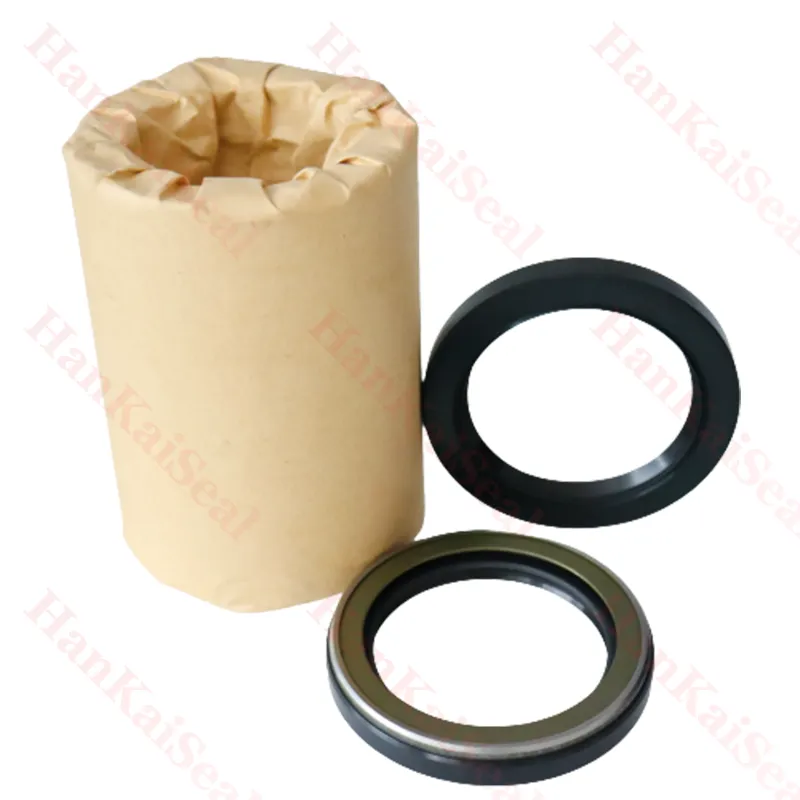Sen . 23, 2024 10:57 Back to list
Understanding Hydraulic Cylinder Seals for Optimal Performance and Longevity in Machinery
Understanding Hydraulic Cylinder Seals Their Importance and Functionality
Hydraulic cylinders are essential components in various industrial and mobile applications, converting hydraulic energy into mechanical energy to perform work. A critical part of these systems is the seals used within hydraulic cylinders. These seals play a vital role in maintaining system efficiency, preventing leaks, and ensuring the longevity of hydraulic machinery.
What Are Hydraulic Cylinder Seals?
Hydraulic cylinder seals are specialized components designed to prevent the escape of hydraulic fluid while allowing the piston to move freely within the cylinder. They are typically made from materials that can withstand high pressures, temperatures, and various chemical exposures commonly found in hydraulic systems. The most common materials used for seals include nitrile rubber, polyurethane, and PTFE (polytetrafluoroethylene).
Types of Hydraulic Cylinder Seals
There are several types of seals used in hydraulic cylinders, each serving a specific purpose
1. Rod Seals These seals are located at the end of the cylinder where the piston rod exits. They prevent hydraulic fluid from leaking out while also ensuring that dirt and contaminants do not enter the cylinder. Effective rod seals help maintain the integrity of the hydraulic system.
2. Piston Seals Piston seals reside within the cylinder and provide sealing between the piston and the cylinder wall. They ensure that hydraulic pressure is maintained when the piston moves, allowing for efficient force generation.
3. Guiding Seals These seals help guide the piston within the cylinder, reducing wear and tear on both the cylinder and piston. They contribute to the overall smooth operation of the hydraulic system.
hydraulic cylinder seals

4. Buffer Seals Buffer seals are used to absorb variations in pressure, preventing sudden impact that could damage the hydraulic components. They act as shock absorbers within the system.
Importance of Proper Seal Selection
The selection of the right hydraulic seals is crucial for the effective operation of hydraulic cylinders. Factors such as operating temperature, fluid type, and pressure must be considered when choosing seals. A poor selection can lead to premature seal failure, resulting in leaks and costly downtime for maintenance and repairs.
Additionally, the proper installation of hydraulic seals is essential. Misalignment or improper fitting can cause damage and lead to seal failure, making it imperative for technicians to follow installation guidelines carefully.
Maintenance and Inspection
Regular inspection and maintenance of hydraulic cylinder seals are essential to ensure long-term functionality. Signs of wear, such as leaks or decreased performance, can indicate that the seals require replacement. Keeping a schedule for seal replacement based on the manufacturer's recommendations can help prevent unexpected breakdowns and extend the life of the hydraulic system.
Conclusion
In conclusion, hydraulic cylinder seals play an indispensable role in the functionality and efficiency of hydraulic systems. Understanding the different types of seals, their functions, and the importance of proper selection and maintenance can help ensure the reliability of hydraulic equipment. By investing in quality seals and adhering to best practices, businesses can minimize downtime and enhance the overall performance of their hydraulic machinery.
-
The Trans-formative Journey of Wheel Hub Oil Seals
NewsJun.06,2025
-
Graphene-Enhanced Oil Seals: Revolutionizing High-Pressure Oil Sealing
NewsJun.06,2025
-
Future of Hydraulic Sealing: Advanced Intelligent TCN Oil Seals
NewsJun.06,2025
-
Don’t Let a Broken TCV Oil Seal Ruin Your Day
NewsJun.06,2025
-
Bio-Inspired Dust Seals for Better Sealing Performance
NewsJun.06,2025
-
Biodegradable and Sustainable Hydraulic Seal Materials
NewsJun.06,2025
-
Top Oil Seal Solutions for Your Industrial Needs
NewsMay.22,2025
Products categories
















